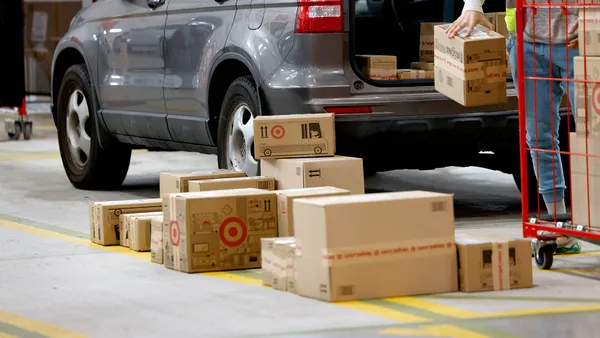Dive Brief:
- Wayfair's current logistics and fulfillment network will last the company through years of growth, CEO Niraj Shah said on an earnings call Tuesday. Wayfair posted 66.5% YoY net revenue growth in Q3.
- "We don’t foresee having any constraints despite what we expect to be a tremendous amount of growth in the volumes through [the network] over the next couple of years," said Shah of the company's network, which weighs in at 18 million square feet globally.
- Wayfair is still in the process of building out a few facilities in Europe, but the capacity-building in the U.S. and Asia is over for now. The pandemic has created unanticipated demand for housewares as consumers spend more time at home and shift to online purchasing. Shah said some Wayfair warehouses have made adjustments to increase storage and throughput given the volume — adding racking and tweaking processes to speed up sortation.
Dive Insight:
Questions from analysts Tuesday about the max capacity of Wayfair's network mark a reversal from just a few months ago when concern about the timeline for full network utilization was top of mind.
In 2020, one out of every three containers arriving at a Wayfair-operated warehouse in Europe was transported from Asia by Wayfair itself, Shah said on the earnings call. The company's middle-mile network, called CastleGate, is gaining suppliers, according to the CEO, by allowing vendors to hand off their goods to Wayfair earlier in the supply chain along with shared demand planning data and other perks.
"We’re leveraging our scale to procure additional space on cargo ships for our suppliers and our suppliers, and [we're] seeing our ocean forwarding business grow considerably in the process. Post order, our scale increasingly allows us to bypass the most congested points in common carrier networks and go straight to the last mile, thereby avoiding surcharges and delivery delays," said Shah.
Part of Shah's confidence that Wayfair's network will continue to serve the company's volume may be motivated by notions that home furnishings purchasing will slow down even if the pandemic proceeds.
"Wayfair deserves a lot of credit for the way in which it has operated during the pandemic. However, it is our view that the current performance is something of an exception rather than the new normal," wrote Neil Saunders, managing director of GlobalData, in emailed comments. "Households buying new desks to aid working from home do not keep on buying new desks ad infinitum."
The cost of Wayfair's immense logistics infrastructure kept the retailer in the red for years. In Q3, Wayfair posted a second quarter of profit since it went public in 2014, reporting $173 million in net income Tuesday.
Company executives were explicit that handling the middle and last mile for much of their sales is the ultimate goal, so they built a warehouse and last-mile delivery network ahead of demand. One year ago, Shah said the building period was finished and the company would move into a phase of increasing utilization rates on the road to profitability.
"What we’re working on now are the buildings that would come online ... three, four, five [years] from now. And at that point, we do envision needing more buildings, but it will really be for capacity reasons due to aggressive scaling," said Shah.
Saunders is skeptical that two quarters of profits make a trend. "Wayfair's future numbers will soften, and this runs the risk of putting it right back to where it was before the pandemic: a retailer that is unprofitable because of high operating costs and eye-wateringly high advertising spend relative to revenue," Saunders said.














